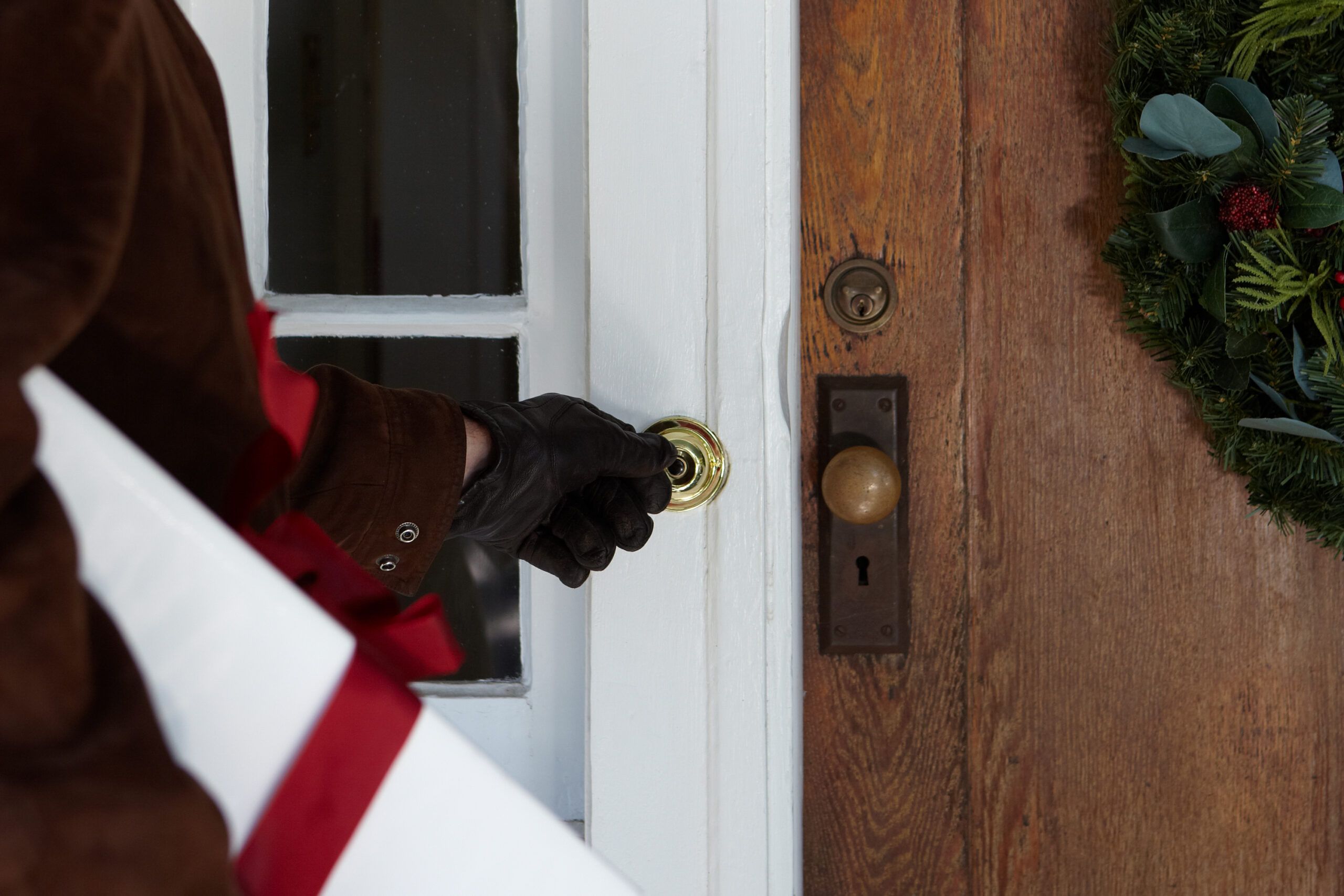We may be compensated if you purchase through links on our website. Our team is committed to delivering honest, objective, and independent reviews on home products and services.
Project details
Skill
Cost
Estimated Time
A malfunctioning doorbell can be a frustrating issue for homeowners, especially in older houses. Whether you’re dealing with a completely silent doorbell or one that’s working intermittently, the good news is that many doorbell problems can be diagnosed and fixed DIY. This guide will walk you through the process of troubleshooting and repairing your doorbell.
*Costs in this article reflect an average of prices found from hardware stores like Lowes and Home Depot and on Amazon.
What Causes a Broken Doorbell?
“Ninety percent of the time, when a doorbell doesn’t work, it’s the fault of the button on the outside because weather and constant use wear it out,” says Matt Tomis, master electrician of Tomis Electrical Contractors. “But it’s also possible the chime or transformer, the other parts of a traditional wired doorbell, have stopped working.”
A faulty transformer is a common culprit behind a non-functioning doorbell. The transformer is responsible for converting your home’s 120-volt electrical current to the lower voltage required by your doorbell system, typically around 16 volts. Here are some signs that your doorbell transformer might be broken:
- No sound when the button is pressed
- Unusual buzzing or humming noises
- Visible damage or corrosion on the transformer
- Weak or intermittent chime
Follow the steps below to diagnose and repair your doorbell system.
Step 1: Check the Doorbell Button
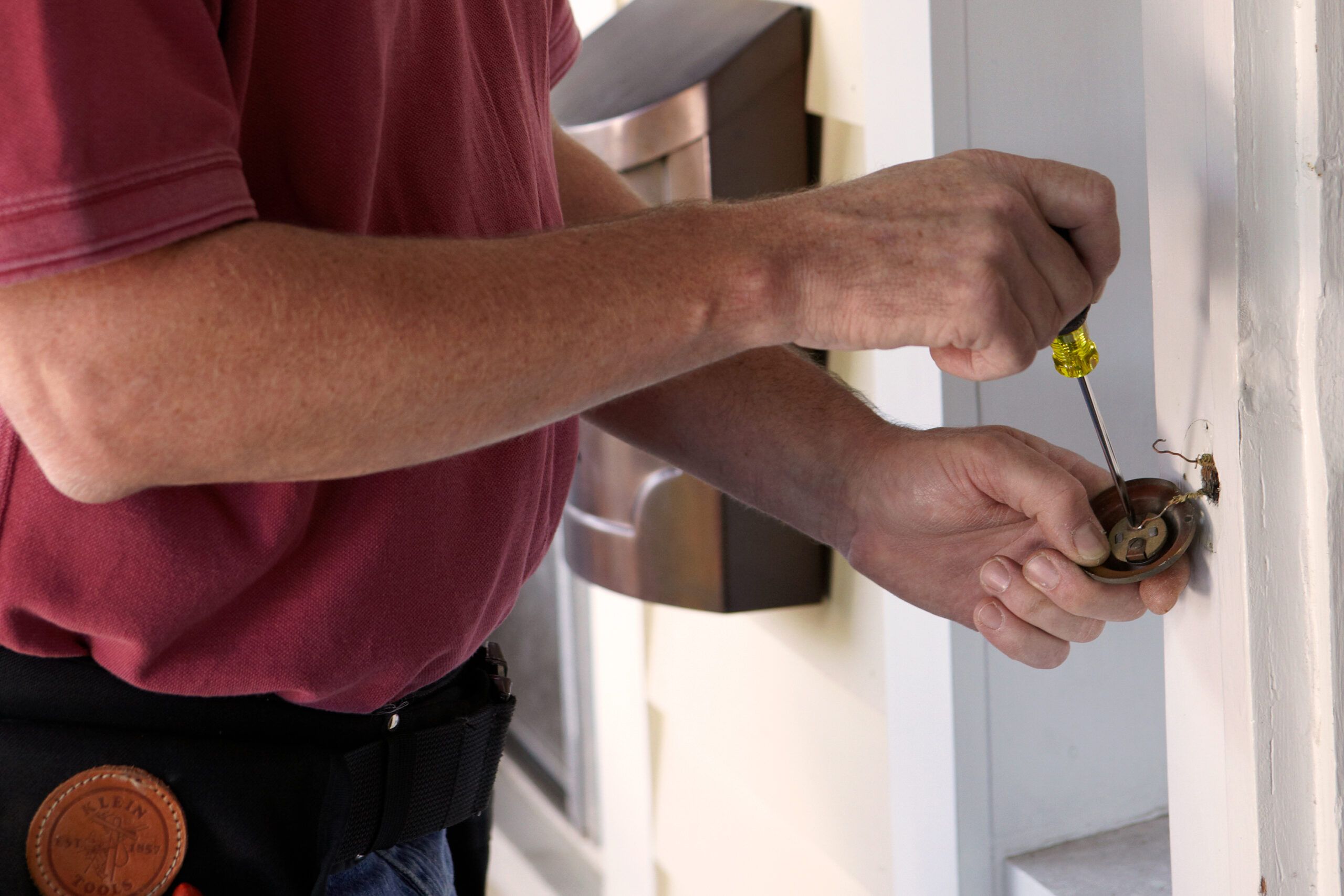
The first step in troubleshooting your doorbell is to check the button. This is the component that often fails due to constant use and exposure to the elements. Here’s how to check it:
- Remove the screws holding the button to the door casing.
- Carefully disconnect the wires from the button.
- Touch the two wires together briefly.
- If the chime rings when you do this, you’ve identified the problem—the button needs to be replaced.
- If the chime doesn’t ring, move on to Step 2.
Step 2: Test the Doorbell Button
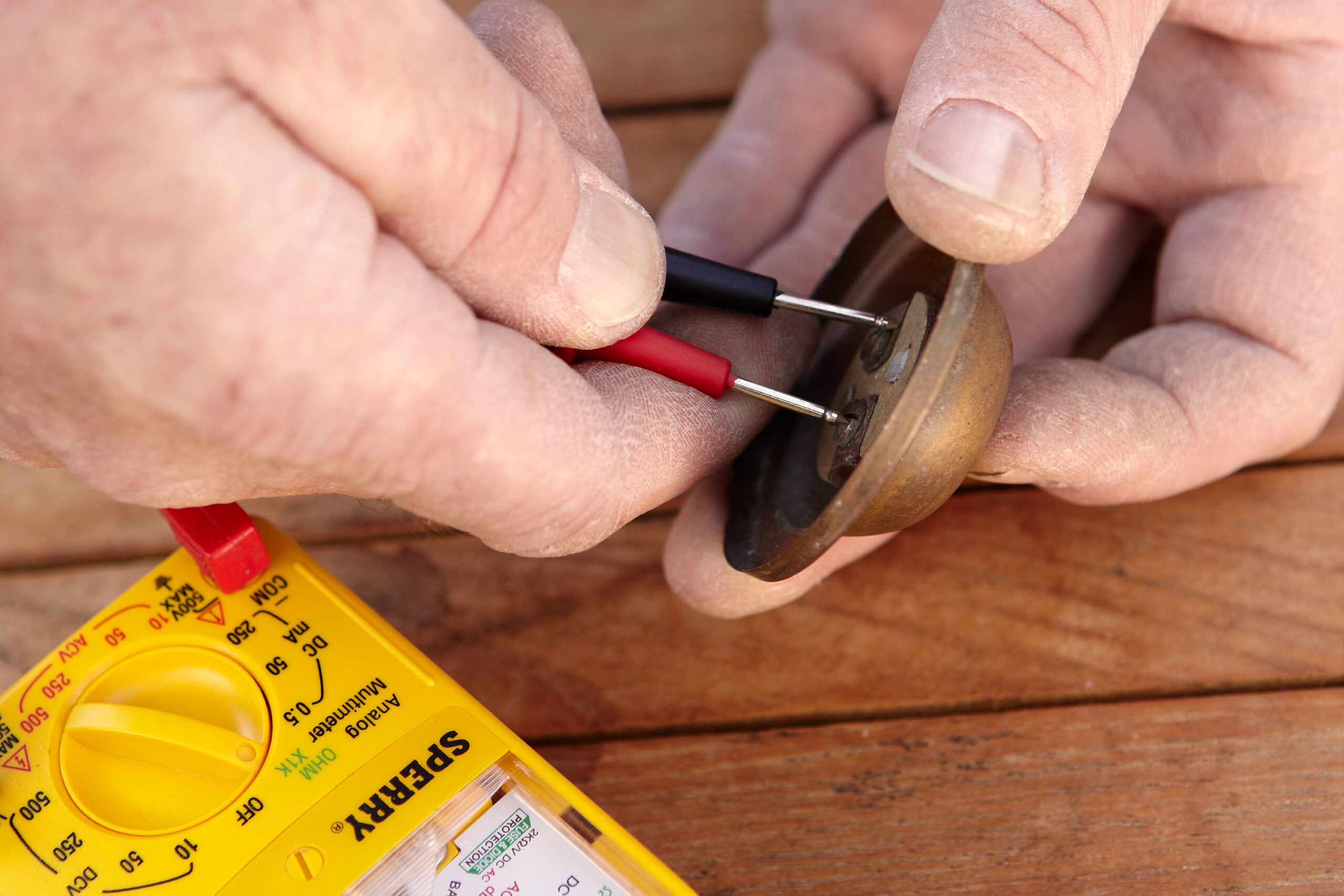
If touching the wires together didn’t activate the chime, test the button itself to confirm whether it’s faulty. Follow these steps:
- Set your multimeter to test for continuity.
- Place the multimeter’s probes on each of the terminal screws at the back of the button.
- Press the button.
- If the multimeter’s needle doesn’t move, the button is faulty and needs replacement (proceed to Step 3).
- If the needle does move, indicating continuity, reattach the wires and reinstall the button, then move on to Step 4.
Step 3: Replace the Button, If Needed
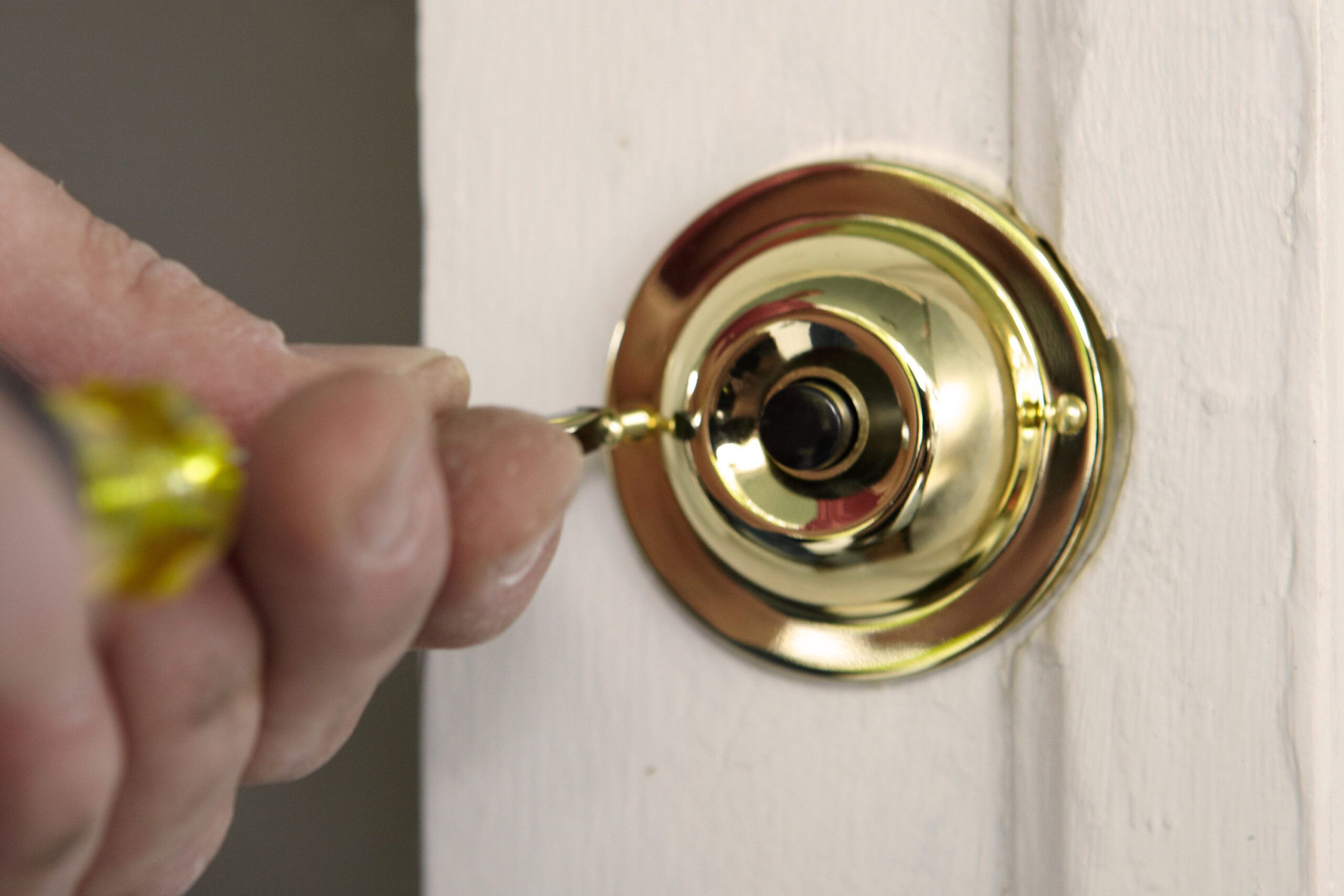
If you’ve determined that the button is faulty, replacing it is straightforward:
- Purchase a new doorbell button that matches your system’s voltage.
- Disconnect the old button if you haven’t already done so.
- Attach the wires to the terminal screws on the back of the new button.
- Fasten the new button to the door casing using the provided screws.
- Test the doorbell to ensure it’s working correctly.
Step 4: Test the Doorbell Transformer
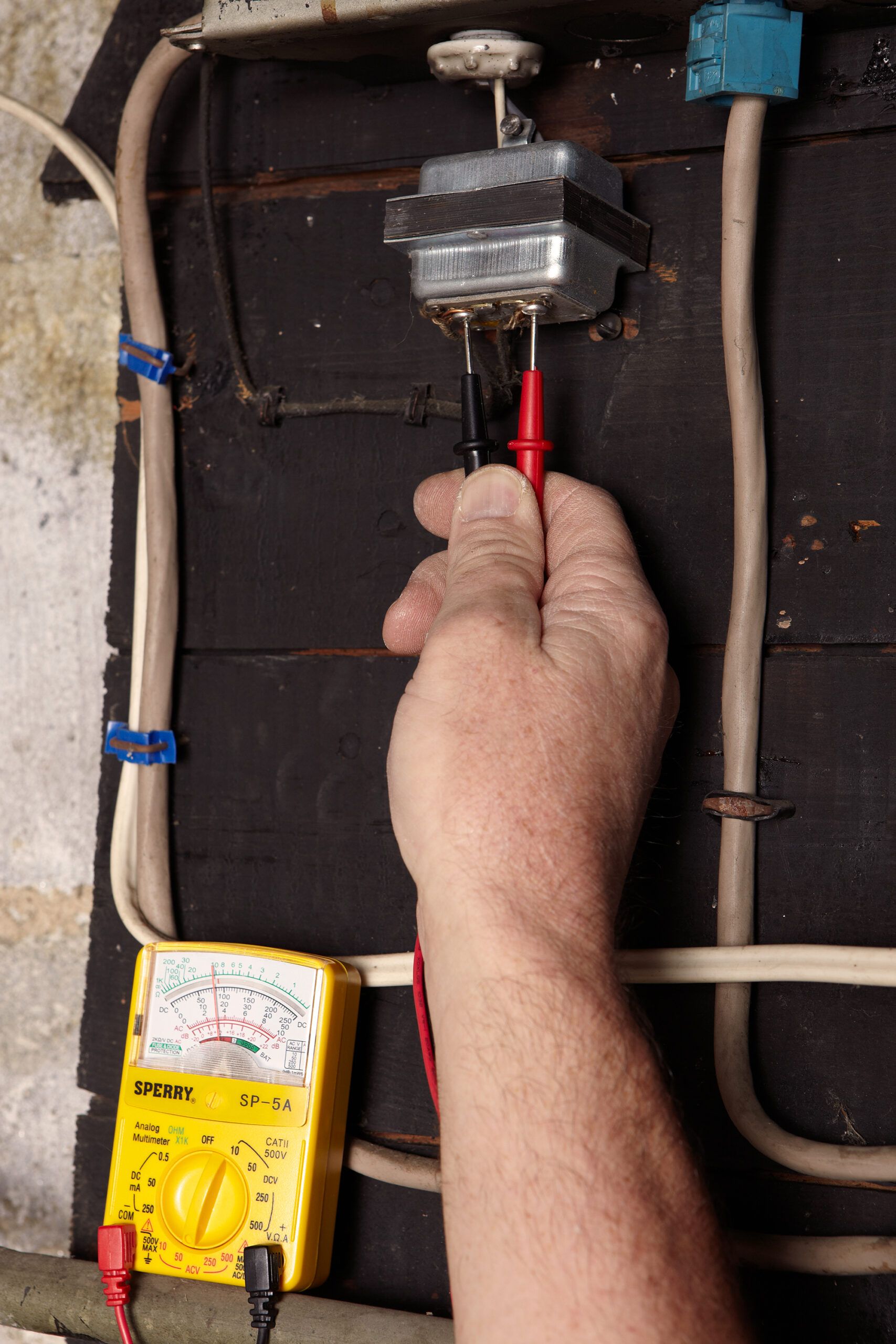
If the button isn’t the issue, the next thing you’ll need to check is the transformer—this part is usually located near your home’s main electrical panel. Here’s how to test it:
- The transformer is typically a small metal box mounted near the electrical panel.
- Set your multimeter to the AC voltage setting.
- Place the multimeter’s probes on the screws where the small-gauge doorbell wires are attached.
- Check the reading—it should be around 16 volts.
- If the reading is significantly lower than 16 volts or there’s no reading at all, the transformer likely needs replacement.
- Call an electrician to replace the transformer. Replacing a transformer involves working with 120-volt wires and complying with local electrical codes.
Step 5: Test the Doorbell Chime
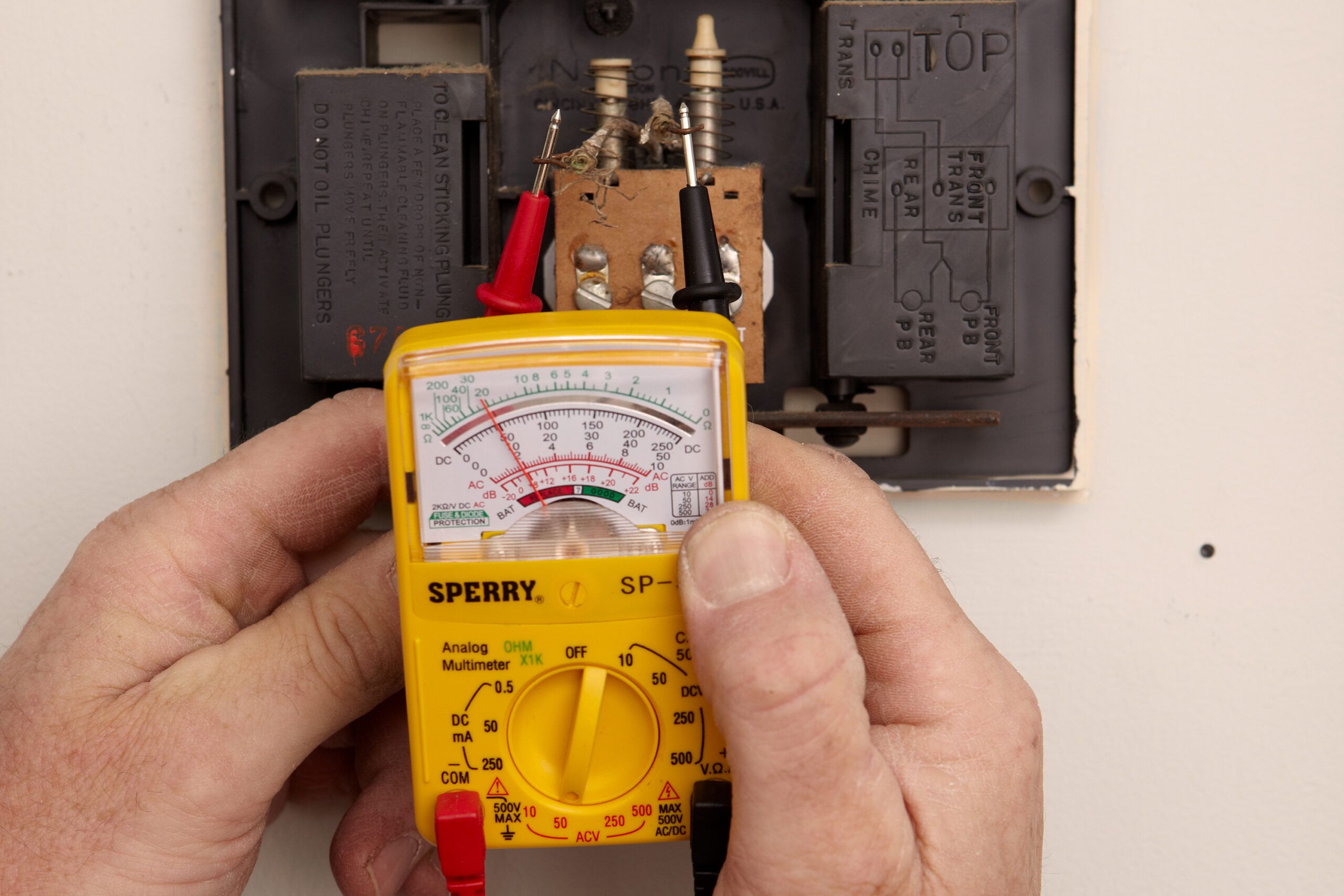
If both the button and transformer are working correctly, the issue might be with the chime unit itself. Here’s how to test it:
- Remove the chime’s cover to access the internal components.
- Keep your multimeter on the AC voltage setting.
- Touch the probes to the wires connected to the chime.
- Have someone press the doorbell button.
- If the multimeter shows current flowing but the chime doesn’t ring, you’ll need to replace the chime unit (proceed to Step 6).
- If there’s no current, you may have a wiring issue. Look for any visible breaks in the wire and make repairs as necessary.
Step 6: Replace the Doorbell Chime, If Needed
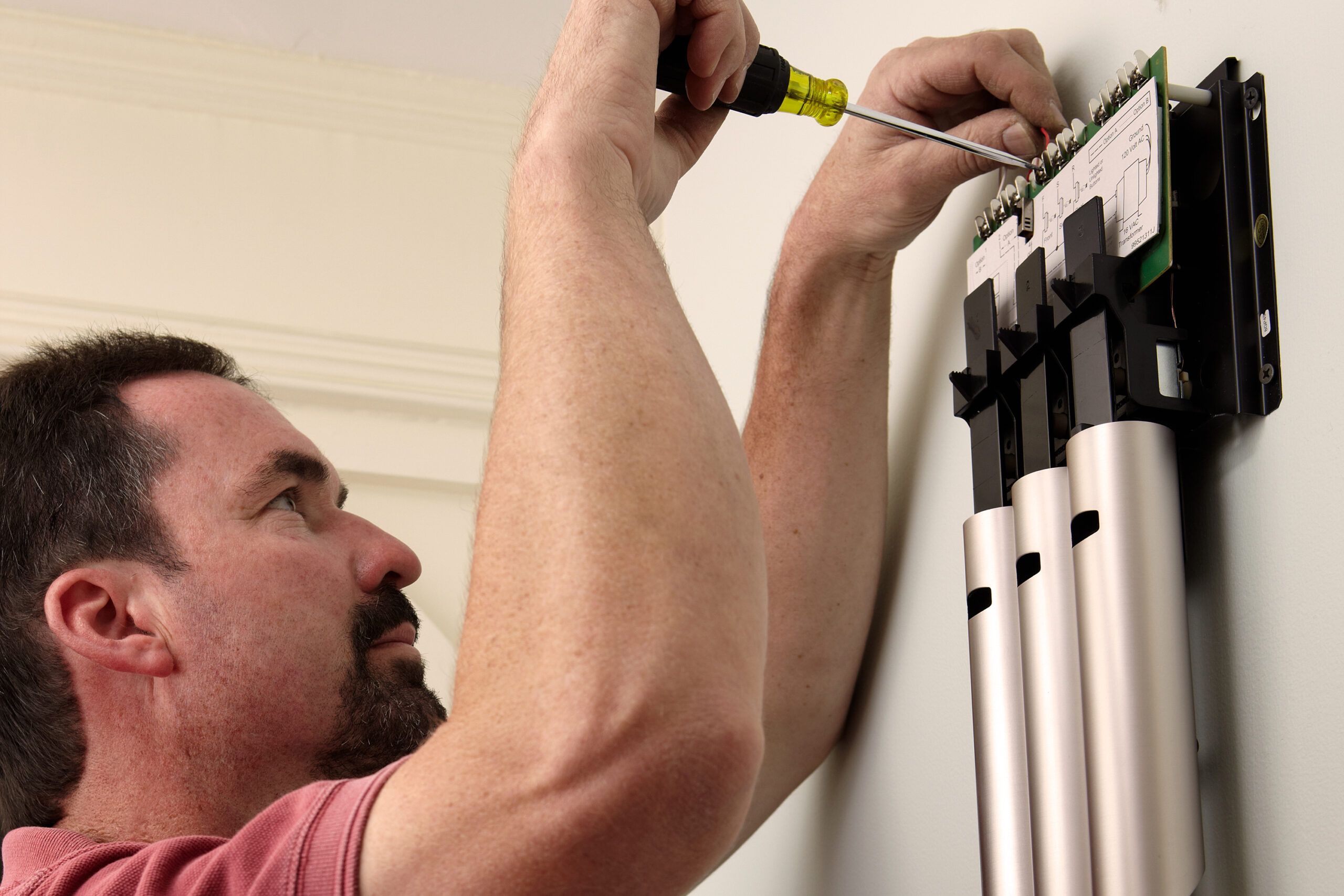
If you’ve determined that the chime unit needs replacement, follow these steps:
- Purchase a new chime unit compatible with your system’s voltage.
- Before disconnecting the old wires, label them with tape: “Front” for the front doorbell, “Back” for the back doorbell (if applicable), and “T” for the transformer.
- Disconnect the old chime unit and remove it from the wall.
- Mount the new chime unit in the same location.
- Connect each wire to its corresponding terminal on the new unit.
- If the existing wires are too short, splice on additional 18-gauge wires as needed.
- Test the new chime by pressing the doorbell button.
- Once you’ve confirmed it’s working, replace the chime cover.
Wireless Doorbell Systems
If you’re dealing with persistent wiring issues or want to avoid the hassle of more repairs, we recommend considering an upgrade to a wireless doorbell. These systems offer several advantages:
- Many units offer customizable chimes and volume control.
- Multiple chime units can be placed throughout the house.
- Some advanced systems integrate with smart home technology.
- These systems offer flexible placement of both the button and the chime unit.
- They offer easy installation without the need for complex wiring.
While wireless systems do require battery changes periodically, they can be an excellent option for homes with older, wired doorbell systems. Modern wireless doorbells can offer other benefits, such as built-in cameras and motion detectors to enhance your home’s security.
Maintaining Your Doorbell System
To keep your doorbell functioning at peak performance, regularly clean the doorbell button to prevent dirt and debris from interfering with its operation. To protect against moisture, apply a weather-resistant sealant around outdoor components. Listen for any unusual sounds from the chime unit that might indicate wear. Check and tighten wire connections annually to ensure good contact. For wireless systems, replace batteries proactively to avoid unexpected failures.
If you live in an area with a harsh climate, inspect your doorbell system regularly for signs of weather-related damage. Check that all components are securely fastened and shielded from direct exposure to rain and snow.
Our Conclusion
Fixing a doorbell is a simple DIY project that can save you the cost of a service call. By following these steps, you can diagnose and repair most common doorbell issues. However, if you’re uncomfortable working with electrical components or encounter a problem beyond your skill level, don’t hesitate to contact a professional electrician.
Tools
 Multi-bit screwdriver
Multi-bit screwdriver Multimeter
Multimeter Wire stripper
Wire stripper
